Include a Topper!
-
Happy Birthday Banner
$9.00 -
Gingerbread Cake Topper
$15.00
Add Ons
Your cart is currently empty!
Since 1949 celebrating 75 years. Order online or call us at 1 800 GAMBINO (426-2466)
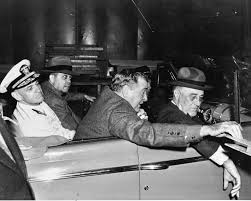
When we had the idea to create a blog post about each of the American presidents who have visited New Orleans, we thought we would be mentioning George W. Bush’s post-Katrina address in Jackson Square along with a handful of spots Barack Obama came to eat.
Boy, did we underestimate the task in front of us! It turns out many, many, many presidents have prioritized a trip to the Big Easy—whether during their presidency, outside of their presidency, or both.
But it was a slow start. The first president to even acknowledge New Orleans was Thomas Jefferson, the third man to hold the office. He wrote of what was then France’s colony: “There is on the globe one spot, the possessor of which is our natural and habitual enemy.” He gave this city such importance because he understood the economic and military necessity of us controlling the entirety of the Mississippi River, particularly its connection to the world via its mouth in the Gulf.
When Jefferson authorized the purchase of the region from France in 1803, he began its transformation from a Creole colony to an American city. And, once it became an American city, the American presidents started coming.
Andrew Jackson
Several future Presidents visited here earlier in their lives, sometimes shaping their worldview or helping them gain prominence. Andrew Jackson, for example, became a national hero when he helped repair American pride by resoundlingly defeating the British in the Battle of New Orleans at the end of the War of 1812.
In advance of the battle, it is said that Jackson met with the infamous pirate Jean Lafitte at the St. Louis Exchange (then called the “Maspero Exchange”) where he convinced him to join his cause against the British.
As we’ll soon learn, Jackson wouldn’t be the only president to visit the St. Louis Exchange. (For more about the St. Louis Exchange see our previous blog post.)
Zachary Taylor
Zachary Taylor, or “Old Rough and Ready,” as he was called by the soldiers he led to victory during the Mexican-American War, was the only President to have lived in Louisiana. He resided in Baton Rouge for much of the second quarter of the 19th century and was stationed in New Orleans twice with the army.
Abraham Lincoln
As a teenager, ‘ol Honest Abe captained flatboats down the Mississippi River between 1828 and 1831. New Orleans is the only major deep south city he is said to have visited, and, upon arrival in New Orleans, it is believed Lincoln witnessed his first slave auction—at that same aformentioned French Quarter exchange Andrew Jackson is said to have met with Jean Lafitte.
What he witnessed at these auctions is believed to have shaped the future president’s view on slavery, shaping the direction of our nation.
Ulysses S. Grant
On September 2, 1863, General Grant—feeling celebratory after victories in the South, such as the one at Vicksburg—rode into New Orleans. Unfortunately, after stopping for what was likely a substantial quantity of food and drink, Grant was trampled by his horse.
“My leg,” he wrote in his memoirs, “was swollen from the knee to the thigh, and the swelling…extended…up to the armpit. The pain was almost beyond endurance.”
The Union general remained in his New Orleans hotel bed for more than a week.
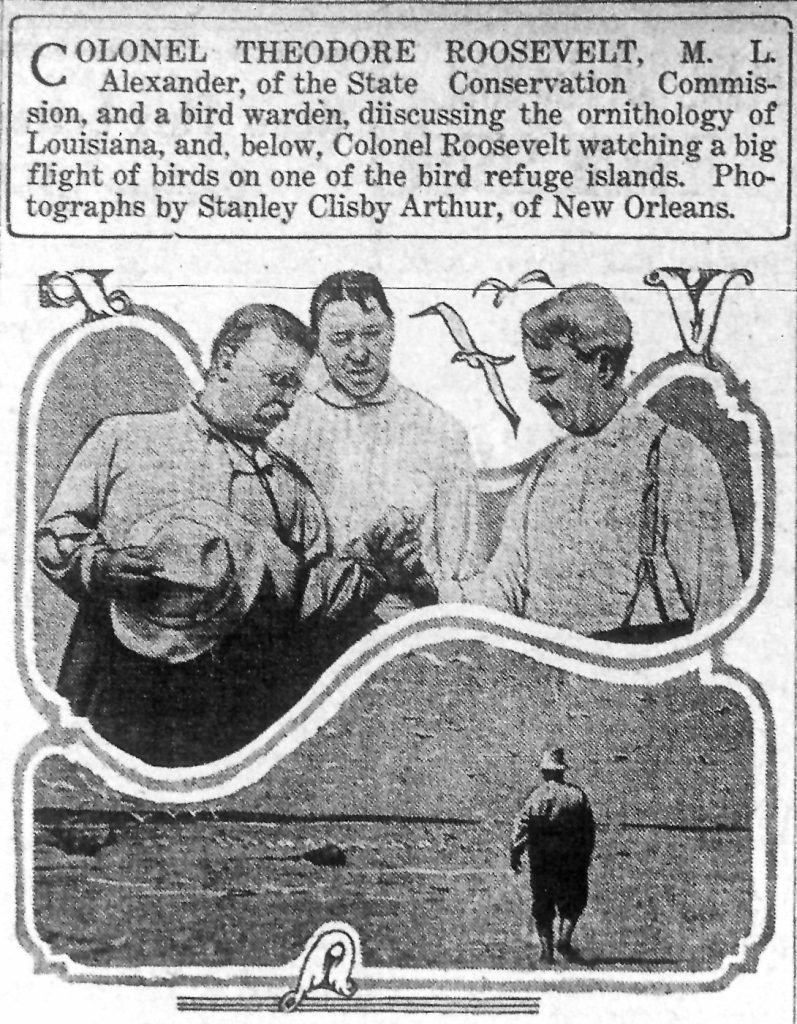
Theodore Roosevelt
On June 7, 1915, six years after his presidency, Teddy Roosevelt visited Louisiana (starting with a brief stop in New Orleans) “under the auspices of the Audubon Society in the hopes of seeing first-hand” what his conservationist policies had accomplished.
Calvin Coolidge (and Herbert Hoover)
President “Silent Cal” Coolidge lived up to his name, choosing to remain invisible rather than visit southeast Louisiana following the horrible 1927 flood.
His absence also showed future presidents the political consequences of such a decision. Instead of going himself, Coolidge sent his Secretary of Commerce Herbert Hoover. Hoover was painted as a hero and savior, and rode that popularity to win the presidency the following year.
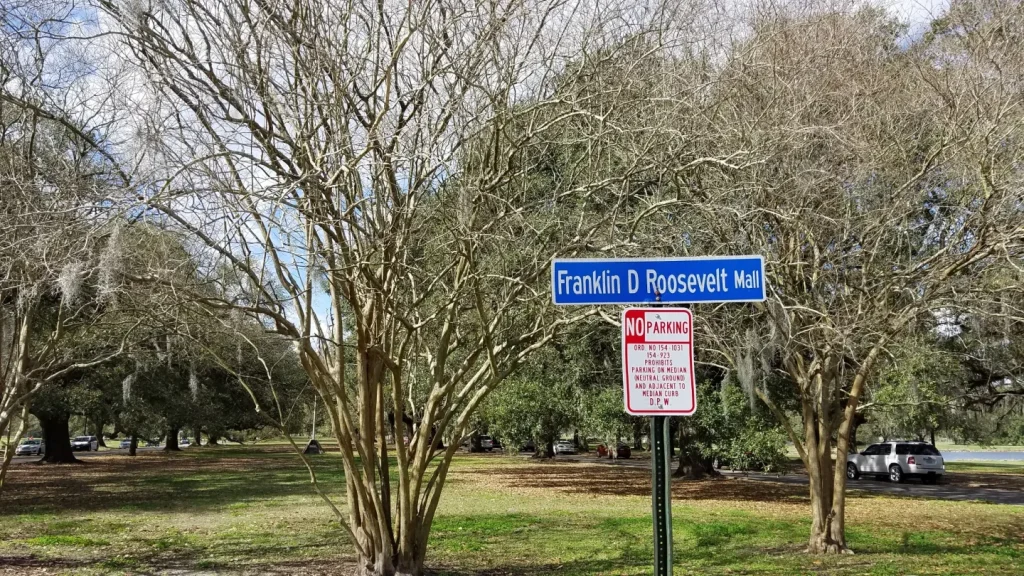
Franklin Delano Roosevelt
President FDR arrived in New Orleans by train on April 29, 1937, seemingly making him the first sitting U.S. President to visit the Crescent City.
Roosevelt’s “New Deal” was helping to lift the country out of the Great Depression, and his Works Progress Administration (WPA) put roughly 8.5 million Americans back to work rebuilding the nation. In the 1930s, WPA projects appeared around New Orleans, including many of the stylish buildings and bridges seen in City Park. On this visit, the President came to town to be honored at the dedication of the park’s Roosevelt Mall.
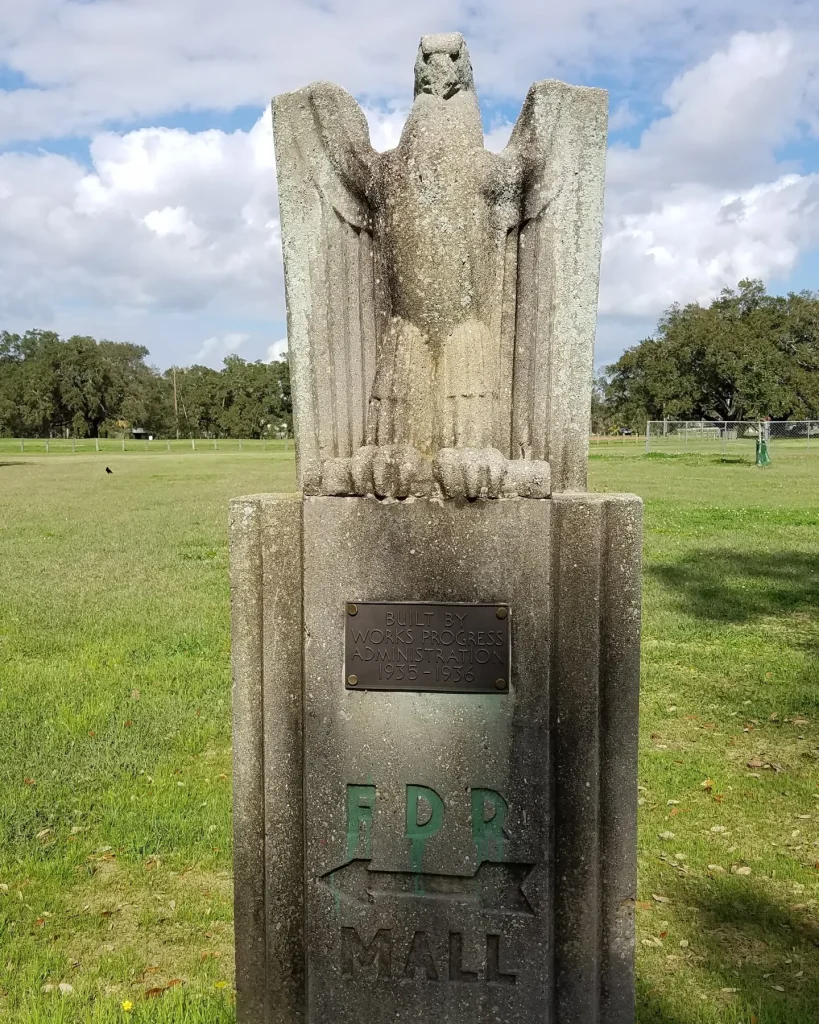
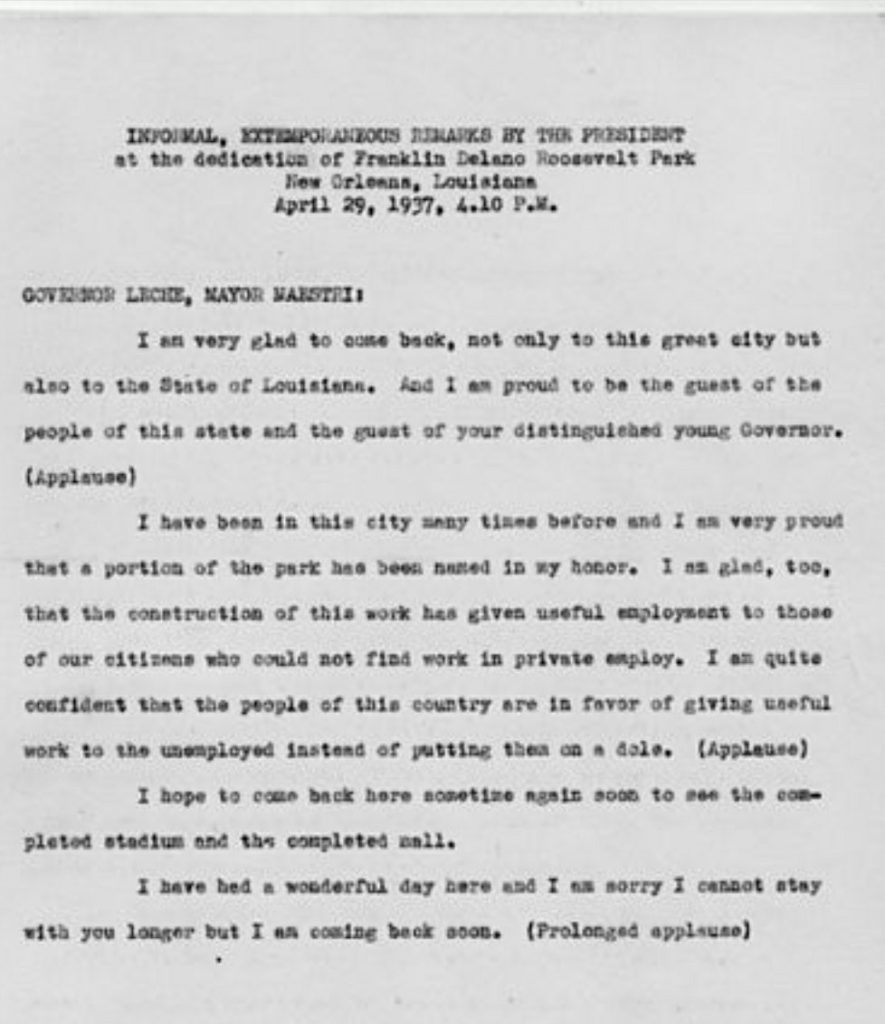
Also on this stay, FDR took part in what would become one of the most famous anecdotes in our city’s political lore. He went to dinner with Louisiana Governor Richard Leche (who Roosevelt’s Justice department would eventually send to prison, but not because of this dinner), New Orleans Mayor Robert Maestri, and others. Mayor Maestri was not known for his eloquence, and advisers implored him to say as little as possible during the meal.
The dinner was at Antoine’s Restaurant, which, established in the French Quarter in 1840, is the country’s oldest family-run restaurant. In the late-19th century, the restaurant invented its most famous dish, Oysters Rockefeller—named for the wealthy Rockefeller family because of the “richness” of the green, herbaceous sauce.
When the oysters were brought to the table, Mayor Maestri—so eager to please—was unable to contain himself. “How do ya like dem ersters, Mr. President?!” he blurted in his thick, unrefined local accent to a startled Roosevelt. The dignitaries at the table rolled their eyes and a legendary tale was born.
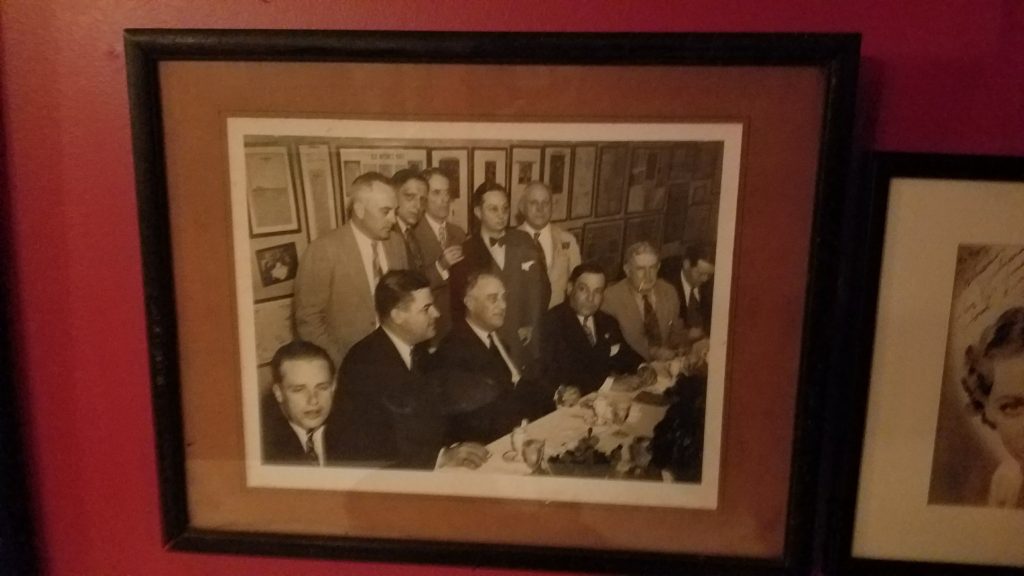
Through the years, Antoine’s has been a common stop for several former presidents, as well. Presidents Carter, H.W. Bush, and Clinton all visited here after their terms in office were complete.
FDR Returns…Under the Cloud of War
On September 29, 1942, FDR was back, but this time the President wasn’t here to eat oysters and visit parks. He was here to view the nation’s war machine. A year after the United States entered WWII, Roosevelt was on a cross-country tour of America’s defense systems.
FDR was here to meet Andrew Jackson Higgins, the man who invented the Higgins boats, whose design allowed troops to land on beaches without natural harbors, and who General Eisenhower would later call, “the man who won the war for us.”
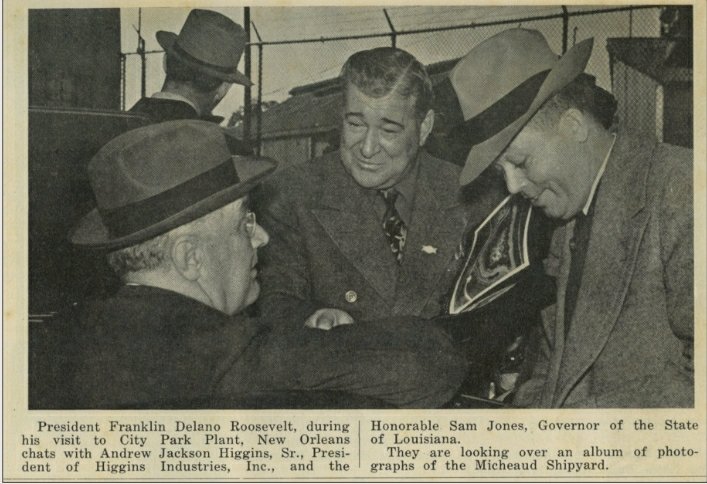
The President toured the Higgins Industries plant near City Park in a convertible. The company’s band played music for the President, and Higgins yelled for workers to give “the world’s greatest man three cheers.” Once they did, he hollered at them again to “show how fast you can get back to work!”
As Vice-President, Truman also visited the plant. It was at factories like this one, around New Orleans, that Higgins’ workers made 29,000 of his vessels. It was these ships that carried our troops onto the beaches of Normandy and mainland Europe on D-Day.
Though the Higgins Industries plant no longer exists, one can still find a plaque on City Park Avenue commemorating the factory and its role in the war effort.
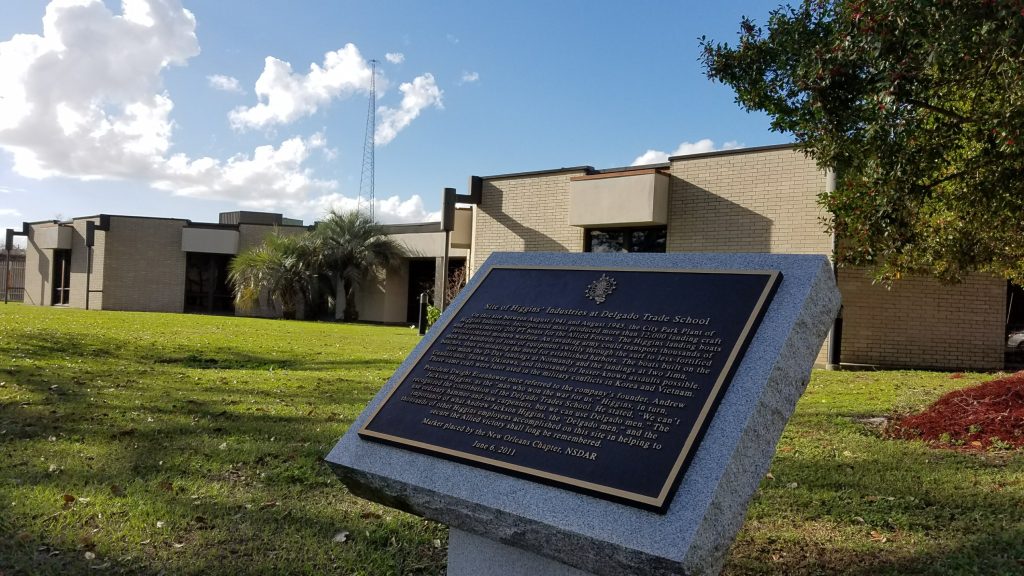
Today, the space is occupied by Delgado Community College, whose graduates Higgins lauded as helping to secure an Allied victory.
Dwight Eisenhower
As a young military officer, Eisenhower spent time in central Louisiana, and he came to New Orleans in 1952 as the Republican nominee for President. But, on October 17, 1953, to commemorate the 150th anniversary of the Louisiana Purchase, Eisenhower visited our city for the first time as Commander-in-chief.
That October morning, he spoke in Jackson Square of how unique the purchase of Louisiana from the French truly was:
“We are observing the anniversary of an act which, though born of other nations’ conflicts, involved the death of not a single American soldier. It was, for the United States, an act of peace. It was also an act of vision and of daring.
“It was daring for a new-born nation, lacking all modern communications making for unity, to venture into a huge, unexplored area of unknown natural hazards and little-known inhabitants. It was daring for such a nation to accept so heavy a debt as this unique purchase imposed upon it. It was daring for our two negotiators in Paris–Livingston and Monroe–to decide to accept Napoleon’s surprising offer without fear of repudiation by their national leaders separated from them by the breadth of an ocean. It was daring for our President, Thomas Jefferson, to support their decision instantly and to face squarely the opposition not only of foreign powers but of political critics of great passion and small vision.”
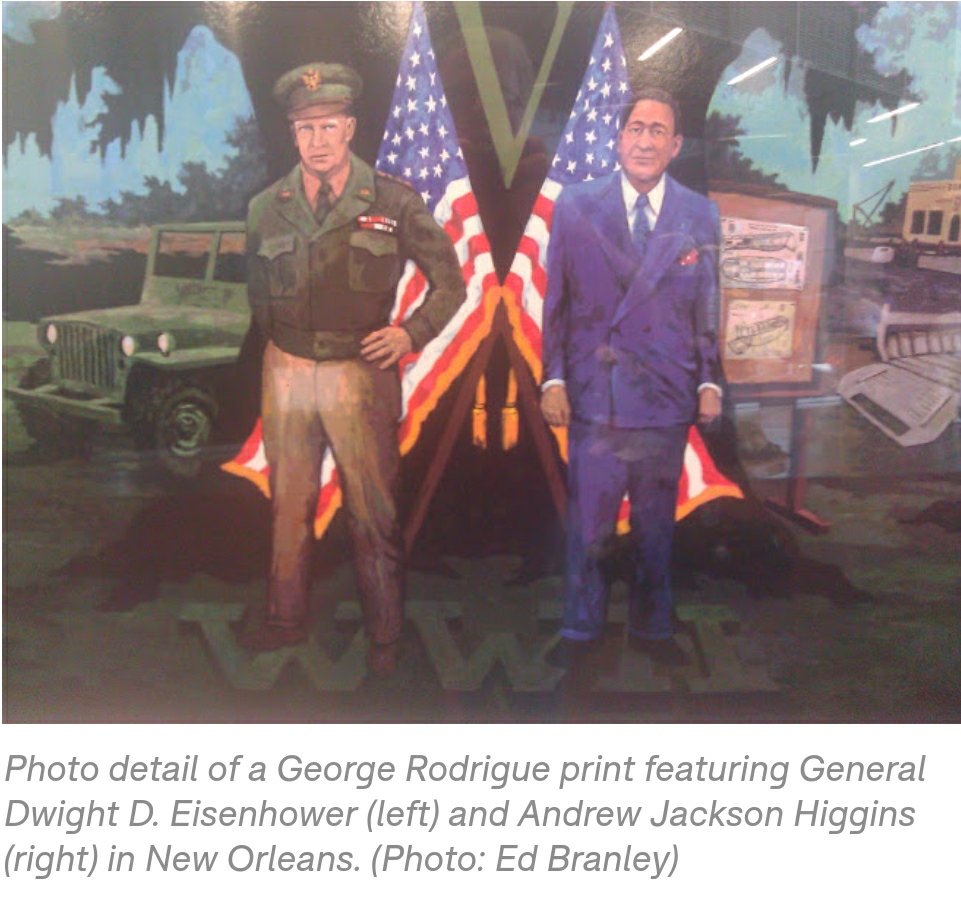
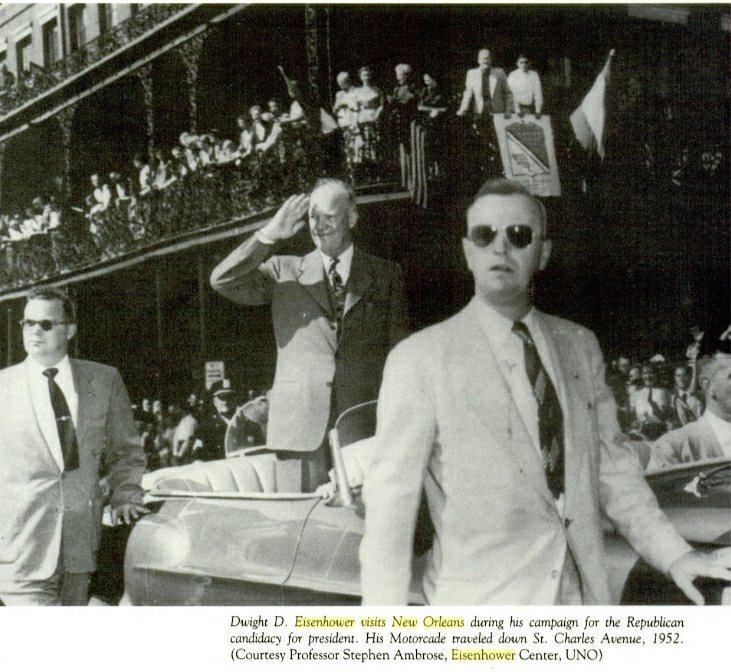
Eisenhower’s speech, which focused on the importance of peace, international trade, and friendly relations with other nations, took place at Jackson Square at 11:52am.
But he wasn’t done yet. Ike gave one more speech that day—somehow less than one hour later—at Moisant Airport.
Moisant Airport would become New Orleans International in 1961, and then renamed Louis Armstrong International Airport in 2001. That is why, to the confusion of many in the present-day, our airport’s code is MSY (short for Moisant Stock Yards).
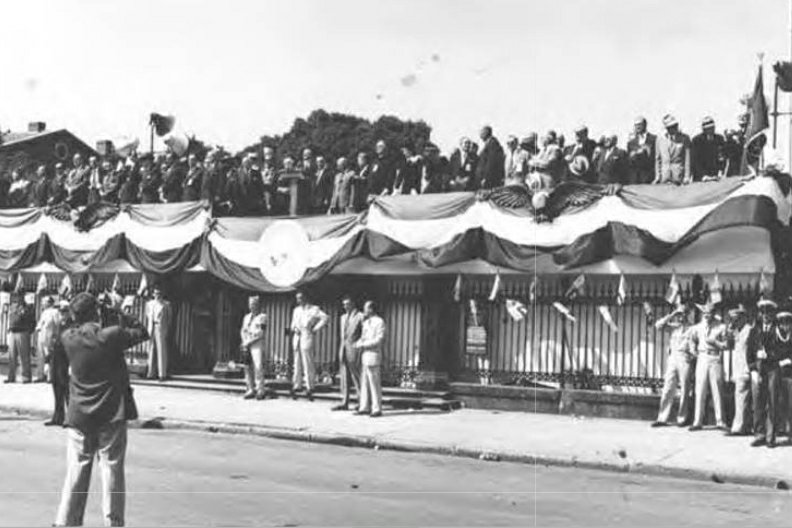
John F. Kennedy
On May 4, 1962, a very locally popular John F. Kennedy became the first President in nearly a decade to visit New Orleans. He made a stop at Uptown’s Nashville Wharf to talk to a crowd of 15,000 about the Port and trade expansion (“Trade or fade!”), before his open-topped motorcade made its way down St. Charles Avenue.
As Camelot drove by, the street was packed with schoolchildren and onlookers of all kinds. Marching bands filled the avenue with music, and one bandmember said that “when the president passed by, our band director was so excited he ran to the street leaving the band to play on its own.”
Author, Errol LaBorde wrote, “For a city used to seeing float-filled Carnival parades and getting beads in return, waiting for the president offered comparatively little in exchange, although it did take time away from being in class and it did provide a brush with history. All in all, not a bad deal.”
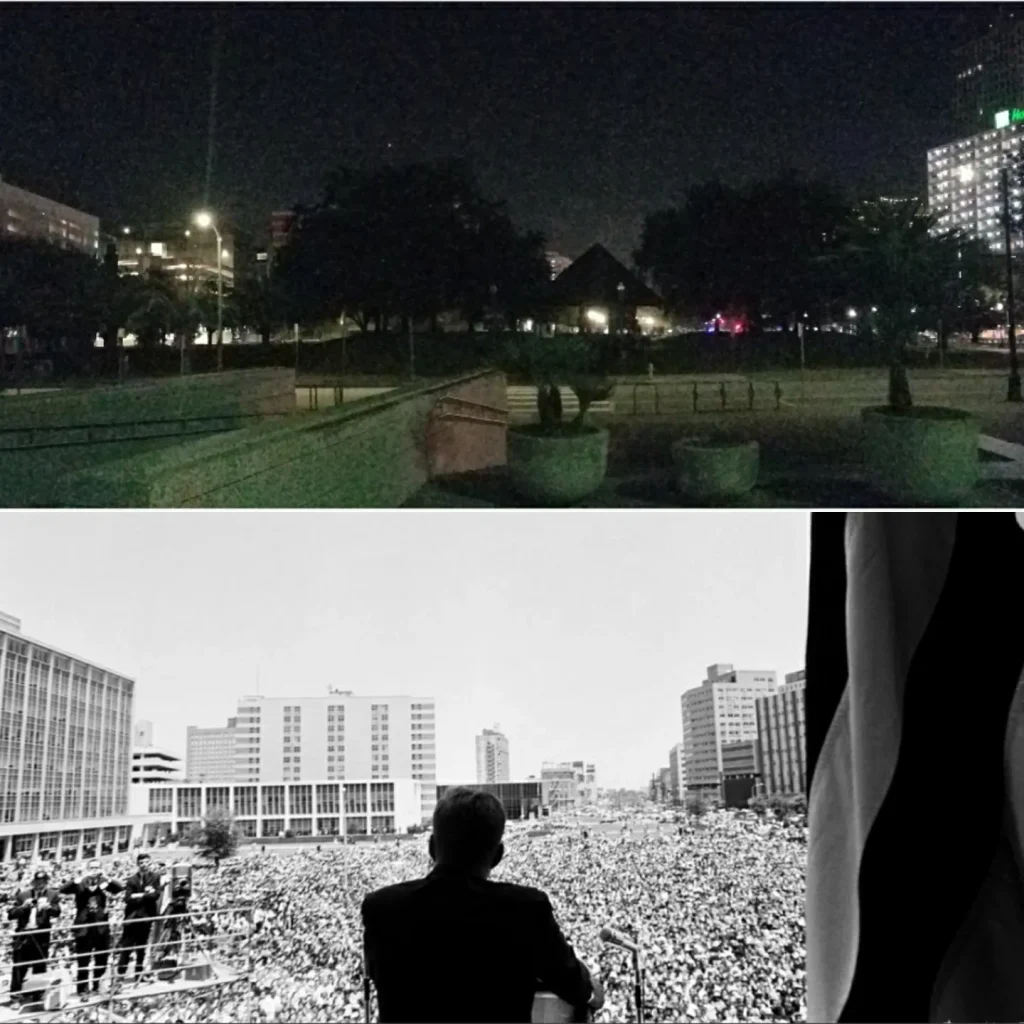
Kennedy ended his ride at City Hall where he attempted to speak to a massive crowd, though there were electronics issues to overcome. In his six-minute speech, he accepted an honorary citizenship and key to the city from Mayor Schiro, and then gave a pep talk, advising locals to prepare themselves to take advantage of what would be billions of dollars in federal investment to the Gulf Coast as part of the emerging space race. (As we wrote about in this blog post, it was an opportunity New Orleans most definitely took advantage of.)
———-
With that visit by President Kennedy, we will conclude Part 1 of our two-part series on U.S. presidential visits to New Orleans. And Part 2 will be jam-packed, because nowadays, a president can’t serve their four-year term without a visit to the Big Easy!